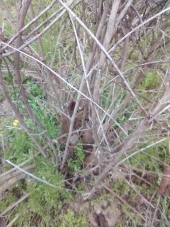
 1
1








This is all just my opinion based on a flawed memory





Moderator, Treatment Free Beekeepers group on Facebook.
https://www.facebook.com/groups/treatmentfreebeekeepers/









Small-holding, coppice and grassland management on a 16-acre site.





 1
1




Invasive plants are Earth's way of insisting we notice her medicines. Stephen Herrod Buhner
Everyone learns what works by learning what doesn't work. Stephen Herrod Buhner




greg mosser wrote:in my experience, black locust doesn’t mind juglone. i’ve got a number of both (including decent sized ones of both species) living quite happily in close proximity.







 2
2








 2
2




“There are no words to express the abyss between isolation and having one ally. It may be conceded to the mathematician that four is twice two. But two is not twice one; two is two thousand times one.”
― G. K. Chesterton
 1
1





|
Create symphonies in seed and soil. For this tiny ad:
Learn Permaculture through a little hard work
https://wheaton-labs.com/bootcamp
|



